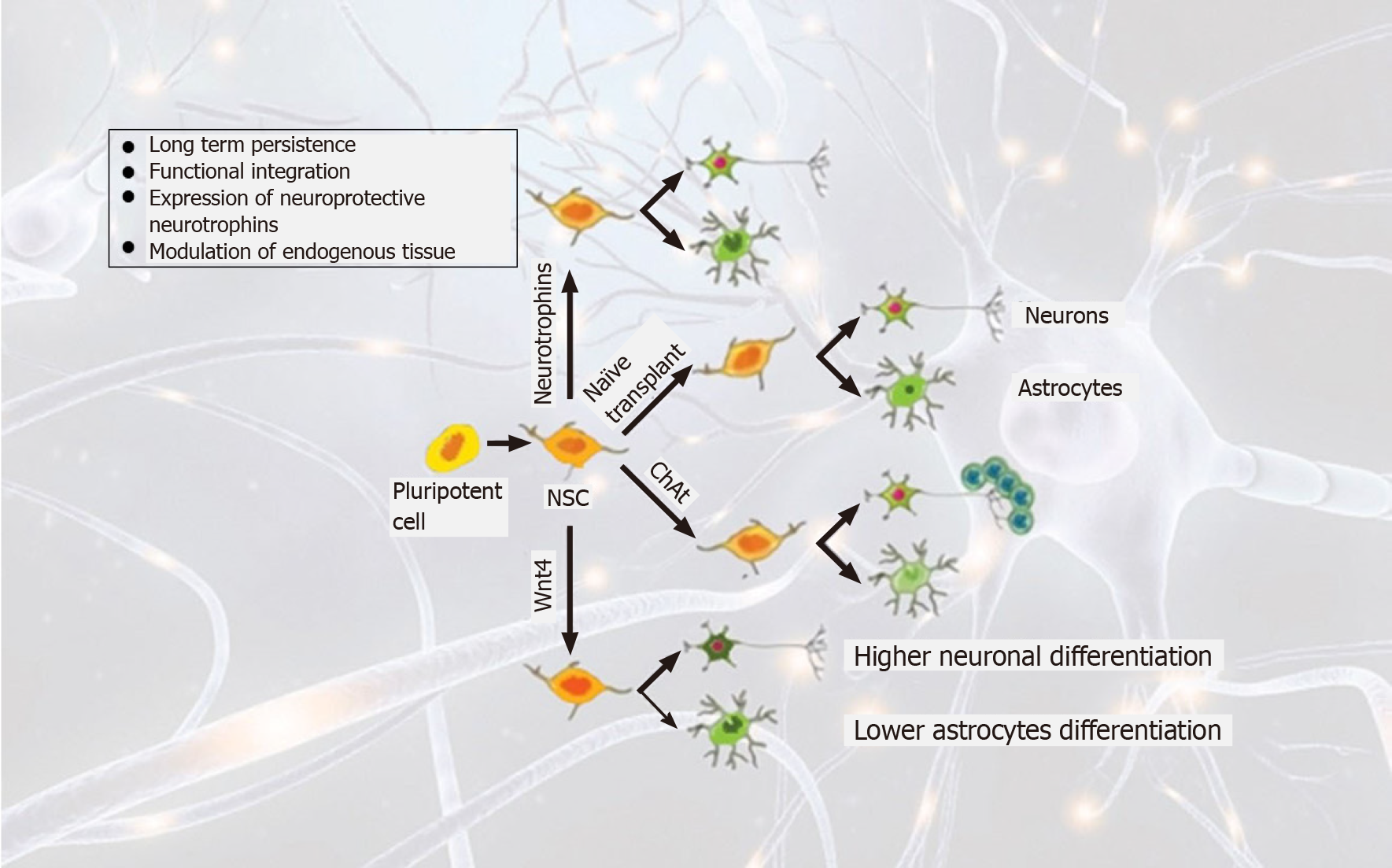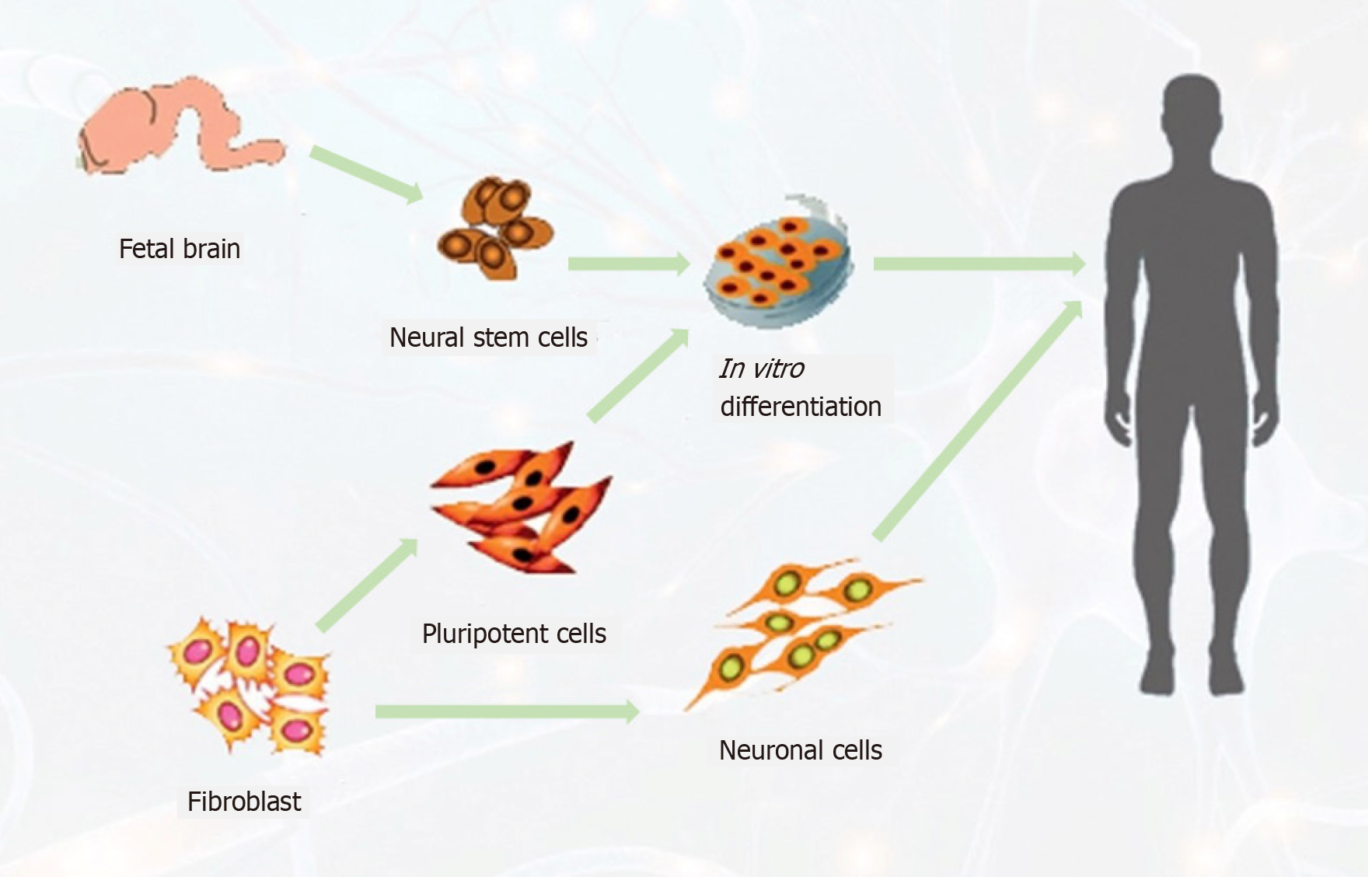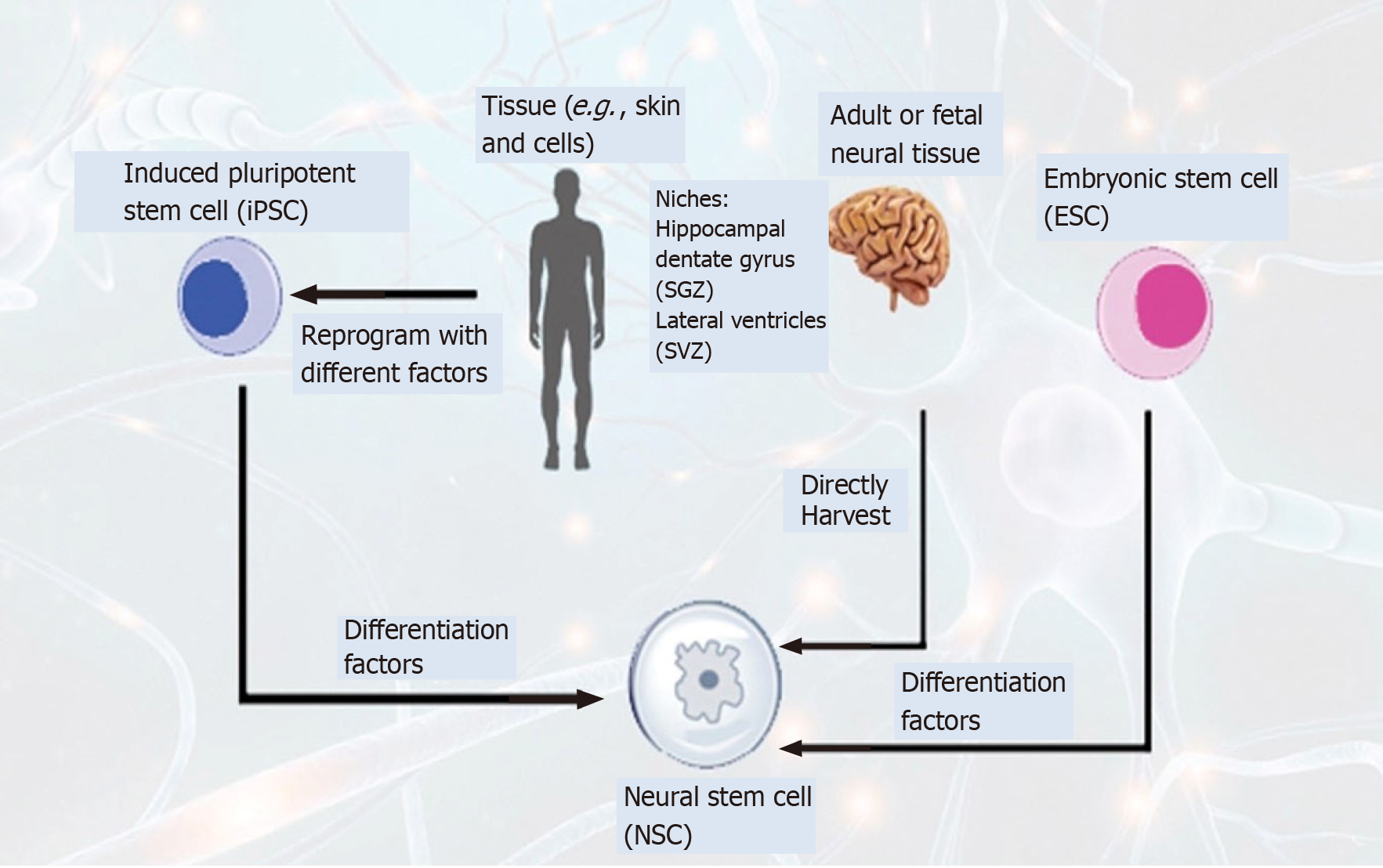Copyright
©The Author(s) 2021.
World J Stem Cells. Sep 26, 2021; 13(9): 1278-1292
Published online Sep 26, 2021. doi: 10.4252/wjsc.v13.i9.1278
Published online Sep 26, 2021. doi: 10.4252/wjsc.v13.i9.1278
Figure 1 Mechanism of action of stem cells in Alzheimer disease.
(1) Replaced injured or lost cells; (2) Enhanced secretion of neurotrophic factors (BDNF, GDNF, FGF, etc.); (3) Anti-amyloid protein production; (4) Inhibit inflammatory response; (5) Facilitate activation of endogenous cells; and (6) Enhanced metabolic activity of neuronal cells in the brain.
Figure 2 Overview of lineages of stem cells and transplantation strategies in Parkinson diseases.
Pluripotent stem cells are directly converted to stem cells that can be further differentiated to long-term survival neurons by overexpressing neurotrophins. Wnt4 overexpression drives differentiation into neuronal cells while reducing glial scar formation.
Figure 3 Schematic diagram of possible sources of neural stem cells to target stroke patients.
(1) Neural stem cells from the fetal brain, differentiated to neuronal cells; (2) Neuronal cells directly generated from fibroblast cells, expanded to neuronal cells to replace the lost cells.
Figure 4 Schematic diagram of generation of neural stem cells via different methods to treat neurodegenerative disorders.
Neural stem cells (NSCs) can be generated by extracting directly from the subgranular zone of the hippocampal dentate gyrus and subventricular zone of the lateral ventricles from fetal or adult brain. NSCs isolation from patients can be reprogrammed by using different factors such as transcription factors, small molecules, microRNAs, and other morphogens. NSCs can also be generated from blastocyst-derived embryonic stem cells by using differentiation factors. SGZ: Subgranular zone; SVZ: Subventricular zone.
- Citation: Zhao L, Liu JW, Shi HY, Ma YM. Neural stem cell therapy for brain disease. World J Stem Cells 2021; 13(9): 1278-1292
- URL: https://www.wjgnet.com/1948-0210/full/v13/i9/1278.htm
- DOI: https://dx.doi.org/10.4252/wjsc.v13.i9.1278












